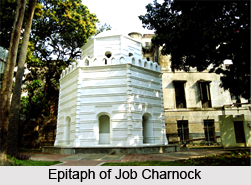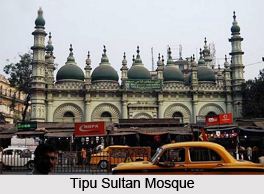 Medieval History of Kolkata began with the establishment of Muslim rule in independent era, after the decline Mughals in India.
Medieval History of Kolkata began with the establishment of Muslim rule in independent era, after the decline Mughals in India.
Beginning of Medieval History of Kolkata
The medieval history of Kolkata is recorded from 1690 with the arrival of the British East India Company, which was consolidating its trade business in West Bengal. Job Charnock who worked for the British East India Company, was formerly credited as the founder of the city.
British East India Company before the Battle of Plassey
In 1712, the British East India Company completed the construction of Fort William, located on the east bank of the Hooghly River to protect their trading factory. Facing frequent skirmishes with French East India Company in Hooghly region of modern West Bengal, the British East India Company began to upgrade their fortifications in 1756, which is one year before the Battle of Plassey.
Capture of Calcutta by Nawab
Siraj ud-Daulah, the independent rule of Bengal in Murshidabad condemned the militarization and tax evasion by the British East India Company. His warning went unheeded, and Siraj ud Daulah attacked; and captured Fort William which led to the killings of several East India company officials in the Black Hole of Calcutta.
Black Hole Day for British East India Company
A force of Company soldiers and British troops led by Robert Clive recaptured the city the following year in 1756, killing several people. It was later described by Holwell and Holwell Monument was established in the heart of Kolkata, now erected in the complex of St. John"s Church, Kolkata.
Battle of Bauxar in 1764
As per the 1765 Treaty of Allahabad following the battle of Buxar, British East India Company was appointed imperial tax collector of the Mughal emperor in the province of Bengal, Bihar and Odisha, while Mughal-appointed Nawabs continued to rule the province. Calcutta was declared as a presidency city.
Decline of Muslims and the Establishment of British East India Company
Kalikata, Govindapur and Sutanati became the headquarters of the British East India Company by 1772. In 1793, ruling power of the Nawabs of Bengal was abolished and British East India Company took complete control of the city and the province in social, economic and political hemisphere.



















